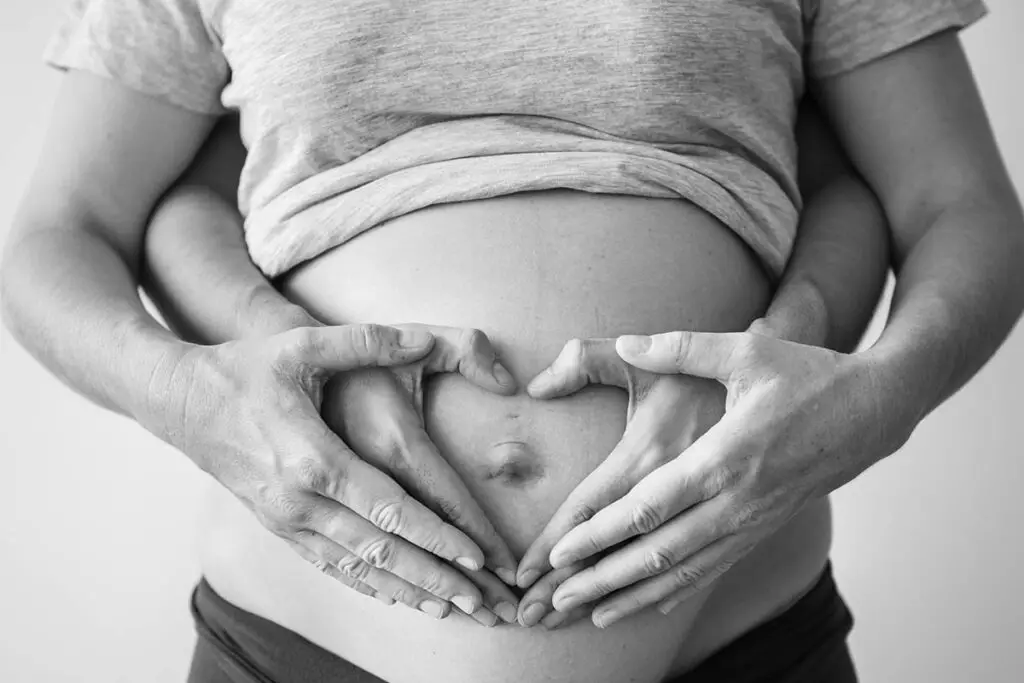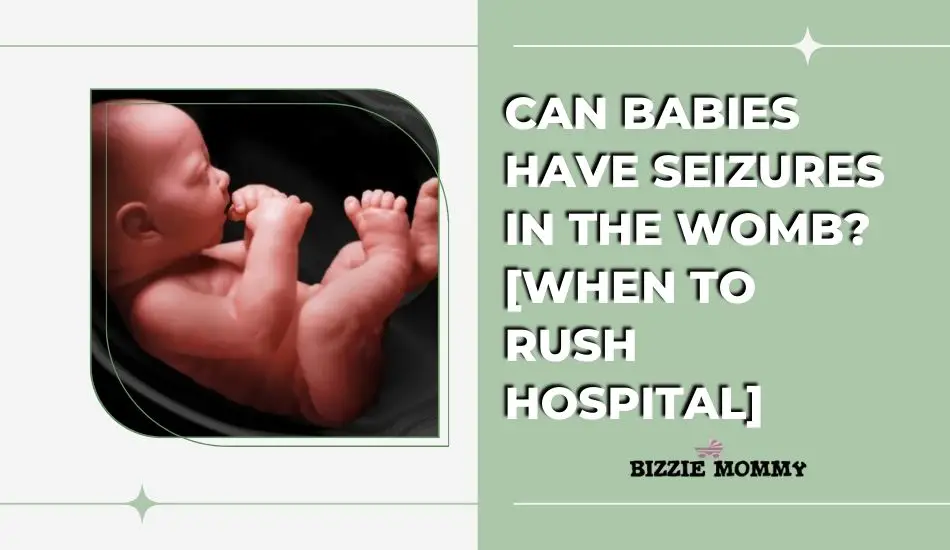Pregnancy is both a miraculous and scary time where one small problem can result in a big issue. A common question first-time mothers have is, “Can babies have seizures in the womb?” and the simple answer is yes. However, this is not a common occurrence, nor is it a normal part of pregnancy.
While the occurrence in itself is extremely rare, it still happens. One of the ways mothers can become aware about fetal seizures in the womb is through the baby’s movements. Whenever there is a fetal seizure, it will feel like hiccups and last only a few seconds. When a pregnant woman begins to feel her baby’s movements in her uterus, this is referred to as quickening. Flutters, bubbles, or minute pulses are what it feels like. If you want to find out whether what you are feeling is just fetal movement or a fetal seizure, you must focus on any irregular fetal movements. As soon as you notice any weird sensations, let your doctor know immediately.
Are Seizures Dangerous for Babies Inside the Womb?
There is proof that a significant amount of newborn neurological issues start right before childbirth. Seizures are one of the symptoms of neurological conditions that may manifest before birth. Seizures while still in the womb and in the newborn stage are significant warnings or predictors for future neurological diseases in children, such as epilepsy and developmental issues.
While there may be instances of unreported or undiscovered in-utero seizures with better outcomes, it is important to keep in mind that reported cases of in-utero seizures are probably representative of the severe end of the range.
Fetal seizure in womb symptoms
There is a risk of your child developing various neurological issues and disorders related to fetal seizures. A prenatal seizure can have abnormally strong, jerky, and sudden recurring movements. In cases of clonic convulsions, the seizure frequency is usually almost two movements per minute; however, this frequency goes up to many movements in one minute with lightning convulsions. Also, in a lightning convulsion, the entire fetal body undergoes sudden movements.
Can a Newborn Have Seizures?
Yes, a newborn can have seizures, and these are called neonatal seizures or fetal seizures. Neonatal seizures are defined as those that happen during the neonatal period, or within a month after the baby is born. The majority occur within a baby’s first few days. The most frequent causes of fetal seizures include hypoxic-ischemic encephalopathy, congenital anomaly of the central nervous system or musculoskeletal system, and metabolic problems. Half of all newborns who experience seizure episodes will have epilepsy when they grow up. Those who suffer from seizures as a result of developmental difficulties or brain damage may also experience additional issues, including cerebral palsy, mental retardation, and other neurological conditions. These disorders are not brought on by the seizure itself but rather by underlying brain injury.
Neonate seizures are more likely to occur in newborns who are premature or underweight at birth. Newborns’ seizures often go away quickly, but they might come back as epilepsy later in childhood or even adulthood.
Symptoms of neonatal seizures
Seizures in newborns are generally brief and mild, making it difficult to determine whether or not a baby is suffering a seizure. Newborns may experience one or all of the following seizure activities:
- recurrent blinking, chewing, or sucking motions on the face
- unusual leg pedaling or bicycle actions
- staring
- stopped breathing
Different types of seizures may affect babies in different ways:
- Clonic seizures are periodic jerking motions that can affect the face, mouth, arms, feet, or other parts of the body.
- Tonic seizures cause muscle groups to freeze or stiffen; the infant may move their head or gaze to one side or twist or lengthen one or more legs or hands.
- Myoclonic seizures are brief, isolated jerks of the whole body or just one arm or leg.
An EEG may be required to determine that the movements are indeed seizures because many of them could also occur in a healthy infant. It is also possible to identify the origin of seizures using imaging testing, like a CT (computed tomography) scan or MRI (magnetic resonance imaging) scan.
Is My Baby likely to Have Fetal Seizures if I Have Epilepsy?
Most epileptic women will experience a healthy pregnancy and labor, with a 90% probability of delivering a healthy kid. However, due to genetic factors, injuries sustained during seizures, and anti-seizure treatments, pregnant women with epilepsy face a greater risk of having an abnormal child. Seizures caused by a known or suspected genetic flaw or issue related to epilepsy are considered to have a genetic origin. Some pathogenic genetic variations (or gene alterations) can appear on their own without being inherited from either of the parents.
Some other issues could be:
- fetal heart rate slows
- reduced oxygen supply to the fetus
- pretermlabor
- low weight at birth
- early placental separation
- fetal death
Birth anomalies and ASMs
Anti-seizure medication (ASM) consumers who become pregnant also have a slightly increased risk compared to epileptics who don’t use ASMs. The dangers rise while taking several ASMs, especially if they contain sodium valproate.
In comparison to other ASMs, sodium valproate carries a higher risk of causing major malformations in fetuses (7 in 100), which increases to 1 in 10 in women who take more than 1000 mg (1 g) each day.
Some ASMs may have an impact on a child’s development after birth. This is known as fetal anti-convulsant syndrome. This appears to be more prevalent with sodium valproate as compared to other ASMs.
How to Feel the Difference in Baby’s Movement?

You should begin to experience your baby’s movements between 16 and 24 weeks of pregnancy. You might not feel movements until after 20 weeks if this is your first pregnancy. By 24 weeks, if you’ve not felt your baby move, you should speak with your doctor or midwife. Both the developmental stage of the baby and the activity levels of the baby will affect the sort of movement you experience. Every child is different, with some being more animated while others are more calm.
The first feelings you experience might be a little kick or a sensation of fluttering, swishing, rolling, or toppling. These fluttering and rolling movements are known as “quickening.” The infant hiccupping is probably a rhythmic motion that happens every few seconds. Although this sensation can occasionally be unsettling, it is really a typical stage of a baby’s growth. These movements will become easily noticeable as your pregnancy proceeds, and you will notice their kicks and blows more readily. By the third trimester, you will be able to feel your baby moving in a way that may be painful. However, since only you know how your baby moves, only you can sense if there is an unusual onset of movements.
How Often Should I Monitor My Baby’s Movements,?
Monitoring your unborn child’s health throughout pregnancy involves keeping track of fetal movements. It is advised that you keep a daily tally of the number of fetal kicks you feel once you are around 28 weeks along. Every day, you should experience the baby moving at least twice during the day. Spending some time each day to observe your baby’s movements is essential. There might be many more movements. You should experience these bouts of movement at least ten times in a single hour. You don’t have to feel the baby moving ten times each hour, but you should sense fetal movement ten times per hour at least once during the day.
Factors affecting movement perceptions
- The position of the placenta acts as a cushion between the mother and the unborn child when it is linked to the front of the uterus. It becomes more challenging to frequently sense the motions.
- Amniotic fluid is important for uninterrupted fetal movement. If its volume goes down, it can reduce the baby’s movements significantly.
- If the mother is overweight, it will be harder to feel fetal movements.
Sometimes My Baby’s Movements are Painful, is this Common?
Yes, it is quite natural to feel a little discomfort or pain every time your baby shows even the slightest movements. Everyone experiences feelings differently. What you experience varies based on the manner in which your baby is moving.
Once your pregnancy progresses and your baby starts moving around, you may start to feel aches or discomforts in the ribs, abdomen, or vagina. This is because, as their muscles expand, they get stronger, which gives their motions more force. Most mothers will eventually feel quick punches in the stomach or stinging kicks in the ribs.
If it only occurs when your baby moves, it is highly improbable to be a symptom of a problem. If the pain persists after your baby stops moving, if it is severe, or if you ever have any other problems, contact your midwife or maternity unit immediately.
How to feel more at ease when the baby is moving?
Stretching your arms over your head or changing your position to stretch your back may help if you’re having rib pain due to your baby’s movements. Another option is to stand up and rotate your hips in a rotational movement. Try several things to figure out what will be the best for you.
What Types of Movements Should I Expect in later Pregnancy?
Throughout pregnancy, fetal movements change. Most of the movements between the 20th and the 36th or 37th week start off small. These small movements gradually diminish, but the powerful and rolling motions intensify. These forceful and rolling motions decrease from the 36th or 37th week until full term, while feeble movements rise as the baby has less room to move.
- The quickening happens between the 14th and 20th week. The mother notices fetal movement for the first time at this point.
- From the 20th to the 36th week, all sorts of fetal movements are noticed: weak, powerful, and rolling motions. The infant can move the spine and every joint, encouraging healthy development.
- By 28 weeks, the startle reaction is developed. In this case, the infant reaches out to his or her chest with both arms and legs after being frightened by a loud noise, an abrupt movement, or the sense of falling.
- During the third trimester, the baby exhibits stepping, which is a bicycle action with both feet. This is crucial in assisting with a normal birth as it allows the baby to turn upside down.
Carefully assess fetal movements
Pregnancy is simultaneously a time of great joy and stress. A small concern can indicate bigger issues. Seizure activity can cause poor outcomes for the baby’s health. You must do whatever possible to ensure that your baby is in good health. Ultrasound scans and ultrasonographic diagnosis at crucial stages of gestation can tell you if you should be concerned about your baby.

